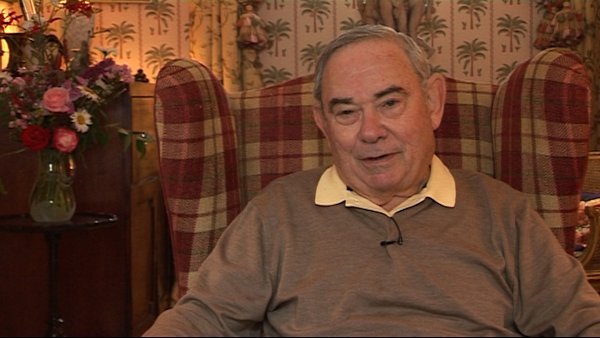NEXT STORY

Cryobiology
RELATED STORIES

NEXT STORY

Cryobiology
RELATED STORIES


|
Views | Duration | |
|---|---|---|---|
| 51. Cell division | 82 | 03:00 | |
| 52. Cryobiology | 62 | 02:53 | |
| 53. Studying the transformation of normal cells into cancerous cells | 81 | 01:51 | |
| 54. HeLa cells | 126 | 02:02 | |
| 55. The WISH cell line | 133 | 01:56 | |
| 56. Testing cell cultures for contamination with mycoplasmas | 82 | 02:30 | |
| 57. Setting cell cultures using human embryonic tissue | 102 | 02:42 | |
| 58. Properties of human tumor tissue | 61 | 02:36 | |
| 59. Testing cell cultures for sensitivity to human viruses | 50 | 03:47 | |
| 60. Discovering a new rhinovirus | 54 | 00:35 |


So the cells are... now you have 1 million cells or more, you put them into a rectangular vessel, for example, and then you add the media that I've just described. The culture vessel is then stoppered with usually a rubber stopper and there are more sophisticated ways of doing this today, but this is in general how it's done. And you lay this flask on its side so that the long side of the rectangle is flat to the surface of the incubator in which you put the culture.
So now you have the cells essentially settling down on to the floor of this long side of the flask that you laid flat on the surface of the incubator. In a couple of hours, the cells, because of their weight, although they weigh very little, will settle down to the floor of the flask, stick to the glass surface and begin to spread out. They are in a spherical form at this time. In a couple of hours, they spread out and in a day or two, they begin to divide, so that within a week or so – these are rough numbers – the cells have divided to the point where they have covered the floor of this single flask and then they do something very important. They stop dividing because the signals that they receive, when they touch neighbour cells, tells them to stop dividing. Prior to that, of course, there is much denuded glass so they have plenty of room to divide. Unlike cancer cells that will continue to grow to some extent when they receive that signal, and they'll grow on top of each other to some small extent, normal cells won't do that unless you use some very sophisticated conditions that are not relevant to this story.
Now, if you want more cells – they have stopped dividing because they have covered the floor of the flask – it is then necessary, if you want more cells and that's a key part of the story, you pour off the spent media. The cells remain behind because they're stuck to the glass floor. You then introduce this enzyme called trypsin, which does the same thing it did in the initial scrap of tissue and that then releases the cells from each other and from the glass surface. And now, for example, you can divide them into two equal parts, introduce them to two equivalent size rectangular bottles and start that process all over again. That in laboratory jargon is called a split, or a subcultivation, and I'll be using those terms subsequently.
Leonard Hayflick (b. 1928), the recipient of several research prizes and awards, including the 1991 Sandoz Prize for Gerontological Research, is known for his research in cell biology, virus vaccine development, and mycoplasmology. He also has studied the ageing process for more than thirty years. Hayflick is known for discovering that human cells divide for a limited number of times in vitro (refuting the contention by Alexis Carrel that normal body cells are immortal), which is known as the Hayflick limit, as well as developing the first normal human diploid cell strains for studies on human ageing and for research use throughout the world. He also made the first oral polio vaccine produced in a continuously propogated cell strain - work which contributed to significant virus vaccine development.
Title: Cell division
Listeners: Christopher Sykes
Christopher Sykes is a London-based television producer and director who has made a number of documentary films for BBC TV, Channel 4 and PBS.
Tags: normal cells, growth medium, glass flask, incubator, cell division, cancer cells, trypsin, subcultivation
Duration: 3 minutes
Date story recorded: July 2011
Date story went live: 08 August 2012